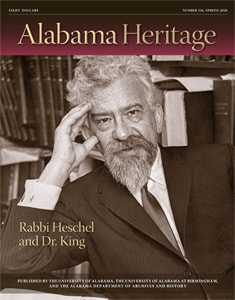|
On the cover: Rabbi Abraham Heschel, a friend and ally of Dr. Martin Luther King Jr. (David M. Rubenstein Rare Book & Manuscript Library, Duke University)
|
FEATURE ABSTRACTS
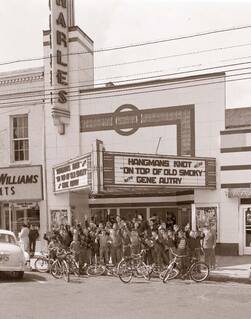 A crowd of Montgomery Examiner paperboys was treated to a double feature of Westerns at the Charles Theatre in 1953: Hangman’s Knot (1952) starring Randolph Scott, and a Gene
Autry movie, On Top of Old Smoky, based on the famous folk song. (Alabama Department of Archives and History)
A crowd of Montgomery Examiner paperboys was treated to a double feature of Westerns at the Charles Theatre in 1953: Hangman’s Knot (1952) starring Randolph Scott, and a Gene
Autry movie, On Top of Old Smoky, based on the famous folk song. (Alabama Department of Archives and History)
Montgomery's Movie Theaters in the Twilight of the B-Western
By Jim Vickrey
Though today even our telephones can stream movies, in an earlier era going to the movies was a major social event, especially for youngsters. In Montgomery in particular, for many youth, the calendar revolved around trips to one or more of the city’s movie theaters. Jim Vickrey offers a look back at the theaters of his youth—including the Strand, the Capri, the Clover, the Charles, the Pekin, and others—as well as the films that graced them and the lessons they instilled. Foremost among those lessons were the mores of the “Cowboy Code,” the ideals embodied by the likes of Gene Autry, William Boyd, Roy Rogers, and Alabama’s own Johnny Mack Brown.
About the Author
Jim Vickrey, PhD, JD, is a retired lawyer and former university president who writes from Montgomery. He enjoyed a nearly fifty year-long career in higher education, teaching courses in communication at six southern universities. Since he began going to the movies regularly in the late 1940s, he has seen more than 3,500 feature films, writing more than 2,000 movie commentaries for print and broadcast media since 1979. He has authored scores of articles in scholarly and popular periodicals and written four books, including Roy, “Rocky” & Red Ryder; “Hoppy,” Durango & Mo[o]re: Personal Recollections of What They Taught Us on Saturdays, Riding Together into the Sunset of the B-Western Movie Era, at “The Strand” & “The Bijou” and on Radio & TV (Dorrance Publishing, 2019).
Additional Resources
To order Dr. Vickrey’s book, see https://www.bookdepository.com/Roy-rocky-Red-Ryder-hoppy-Durango-Mo-o-re-Ph-D-J-D-Vickrey/9781480990333.
To learn more about Alabamian Johnny Mack Brown, see “The Johnny Mack Brown Story” by Philip D. Beidler in Alabama Heritage 38.
To learn more about Montgomery’s Davis Theatre, see https://www.troy.edu/student-life-resources/arts-culture/davis-theatre/index.html.
By Jim Vickrey
Though today even our telephones can stream movies, in an earlier era going to the movies was a major social event, especially for youngsters. In Montgomery in particular, for many youth, the calendar revolved around trips to one or more of the city’s movie theaters. Jim Vickrey offers a look back at the theaters of his youth—including the Strand, the Capri, the Clover, the Charles, the Pekin, and others—as well as the films that graced them and the lessons they instilled. Foremost among those lessons were the mores of the “Cowboy Code,” the ideals embodied by the likes of Gene Autry, William Boyd, Roy Rogers, and Alabama’s own Johnny Mack Brown.
About the Author
Jim Vickrey, PhD, JD, is a retired lawyer and former university president who writes from Montgomery. He enjoyed a nearly fifty year-long career in higher education, teaching courses in communication at six southern universities. Since he began going to the movies regularly in the late 1940s, he has seen more than 3,500 feature films, writing more than 2,000 movie commentaries for print and broadcast media since 1979. He has authored scores of articles in scholarly and popular periodicals and written four books, including Roy, “Rocky” & Red Ryder; “Hoppy,” Durango & Mo[o]re: Personal Recollections of What They Taught Us on Saturdays, Riding Together into the Sunset of the B-Western Movie Era, at “The Strand” & “The Bijou” and on Radio & TV (Dorrance Publishing, 2019).
Additional Resources
To order Dr. Vickrey’s book, see https://www.bookdepository.com/Roy-rocky-Red-Ryder-hoppy-Durango-Mo-o-re-Ph-D-J-D-Vickrey/9781480990333.
To learn more about Alabamian Johnny Mack Brown, see “The Johnny Mack Brown Story” by Philip D. Beidler in Alabama Heritage 38.
To learn more about Montgomery’s Davis Theatre, see https://www.troy.edu/student-life-resources/arts-culture/davis-theatre/index.html.
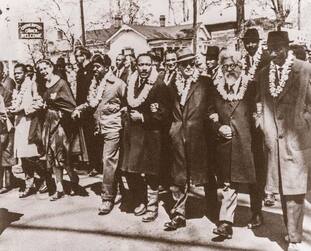 On the successful third Selma to Montgomery March, Martin Luther King Jr. invited Rabbi Heschel to join him. In this famous photograph, King, center, walks with, on his left, Nobel Peace Prize-recipient Ralph Bunche, Rabbi Heschel, and Birmingham civil rights leader Fred Shuttlesworth. On King’s right is Ralph Abernathy. Future congressman John Lewis is on the far left. (David M. Rubenstein
Rare Book & Manuscript Library, Duke University)
On the successful third Selma to Montgomery March, Martin Luther King Jr. invited Rabbi Heschel to join him. In this famous photograph, King, center, walks with, on his left, Nobel Peace Prize-recipient Ralph Bunche, Rabbi Heschel, and Birmingham civil rights leader Fred Shuttlesworth. On King’s right is Ralph Abernathy. Future congressman John Lewis is on the far left. (David M. Rubenstein
Rare Book & Manuscript Library, Duke University)
The Rabbi and Dr. King
By Frye Gaillard
Though they may have seemed like unlikely friends from the outside, Rabbi Abraham Heschel and Dr. Martin Luther King Jr. established a close and formative friendship that helped determine the course of the civil rights movement. King (born in Atlanta in 1929) looked to Heschel (born in Warsaw in 1907) for input and wisdom at key points during the movement. Heschel, who escaped the Holocaust but lost family members during it, may have recognized something of himself when he first responded to King’s efforts in Selma. Despite their different faiths, the pair found many commonalities in their shared struggle, and they remained friends until King’s untimely death.
About the Author
Frye Gaillard, writer in residence at the University of South Alabama, is the author of such award-winning books as Cradle of Freedom: Alabama and the Movement That Changed America (University of Alabama Press, 2006); A Hard Rain: America in the 1960s (New-South Books, 2016); and Go South to Freedom (New-South Books, 2016). His most recent publication is a book for young readers, The Slave Who Went to Congress (New-South Books, 2020), co-authored with Marti Rosner. Gaillard has been the recipient of the Lillian Smith Book Award, the Clarence Cason Award, and the Alabama Governor’s Award for the Arts.
Additional Resources
Info on Rabbi Heschel: https://kinginstitute.stanford.edu/encyclopedia/heschel-abraham-joshua
Info on their friendship: https://www.plough.com/en/topics/community/leadership/two-friends-two-prophets
By Frye Gaillard
Though they may have seemed like unlikely friends from the outside, Rabbi Abraham Heschel and Dr. Martin Luther King Jr. established a close and formative friendship that helped determine the course of the civil rights movement. King (born in Atlanta in 1929) looked to Heschel (born in Warsaw in 1907) for input and wisdom at key points during the movement. Heschel, who escaped the Holocaust but lost family members during it, may have recognized something of himself when he first responded to King’s efforts in Selma. Despite their different faiths, the pair found many commonalities in their shared struggle, and they remained friends until King’s untimely death.
About the Author
Frye Gaillard, writer in residence at the University of South Alabama, is the author of such award-winning books as Cradle of Freedom: Alabama and the Movement That Changed America (University of Alabama Press, 2006); A Hard Rain: America in the 1960s (New-South Books, 2016); and Go South to Freedom (New-South Books, 2016). His most recent publication is a book for young readers, The Slave Who Went to Congress (New-South Books, 2020), co-authored with Marti Rosner. Gaillard has been the recipient of the Lillian Smith Book Award, the Clarence Cason Award, and the Alabama Governor’s Award for the Arts.
Additional Resources
Info on Rabbi Heschel: https://kinginstitute.stanford.edu/encyclopedia/heschel-abraham-joshua
Info on their friendship: https://www.plough.com/en/topics/community/leadership/two-friends-two-prophets
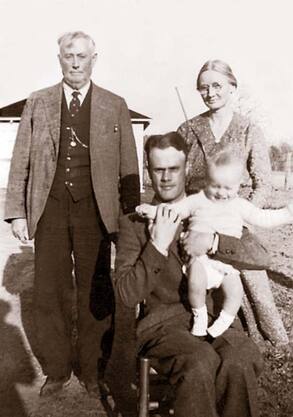 Johnson with his oldest daughter Ressie, her son Truman, and a great-grandchild. He maintained a close relationship with both of his families until the end of his life. (Claire Hamner Matturro)
Johnson with his oldest daughter Ressie, her son Truman, and a great-grandchild. He maintained a close relationship with both of his families until the end of his life. (Claire Hamner Matturro)
James Henry Johnson's Murder, Conviction, and Pardon
“Injustice to the Living Cannot Benefit the Dead”
By Claire Hamner Matturro
After the 1904 murder of A. J. Rollinson, only one thing seemed certain: James Henry Johnson was responsible. His conviction at trial supported this idea. However, in the days that followed, many unusual circumstances surrounded his situation. Eventually, Johnson received an early release from prison to tend to his dying wife, and he was ultimately granted a pardon. Johnson returned to his life and children, and he established himself as a prominent and prosperous member of Dallas County society.
About the Author
Claire Hamner Matturro, a fifth-generation Alabamian, holds a JD and MA from the University of Alabama. A former lawyer, she taught legal research and writing at Florida State University College of Law and the University of Oregon College of Law. She is a former editor of The Trial Advocate Quarterly and author of four legal mysteries published by William Morrow. She is the great-granddaughter of James Henry Johnson. The author gratefully acknowledges the skilled help of Scotty. E. Kirkland, archivist, Reference Section, Alabama Department of Archives and History, in researching the trial and pardon. She is also grateful to several other descendants of James Henry Johnson, including but not limited to Jo-Ann Johnson Costa (author of The Bequest of Big Daddy [Koehler Books 2013] inspired by the Johnson story), Della Johnson Hamner, Milton Johnson, Paul Johnson, Loretta and Barbara Adams, and Wade Johnson for their contributions of research and photographs.
“Injustice to the Living Cannot Benefit the Dead”
By Claire Hamner Matturro
After the 1904 murder of A. J. Rollinson, only one thing seemed certain: James Henry Johnson was responsible. His conviction at trial supported this idea. However, in the days that followed, many unusual circumstances surrounded his situation. Eventually, Johnson received an early release from prison to tend to his dying wife, and he was ultimately granted a pardon. Johnson returned to his life and children, and he established himself as a prominent and prosperous member of Dallas County society.
About the Author
Claire Hamner Matturro, a fifth-generation Alabamian, holds a JD and MA from the University of Alabama. A former lawyer, she taught legal research and writing at Florida State University College of Law and the University of Oregon College of Law. She is a former editor of The Trial Advocate Quarterly and author of four legal mysteries published by William Morrow. She is the great-granddaughter of James Henry Johnson. The author gratefully acknowledges the skilled help of Scotty. E. Kirkland, archivist, Reference Section, Alabama Department of Archives and History, in researching the trial and pardon. She is also grateful to several other descendants of James Henry Johnson, including but not limited to Jo-Ann Johnson Costa (author of The Bequest of Big Daddy [Koehler Books 2013] inspired by the Johnson story), Della Johnson Hamner, Milton Johnson, Paul Johnson, Loretta and Barbara Adams, and Wade Johnson for their contributions of research and photographs.
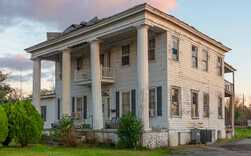 Cowan-Ramser House/White’s Funeral Home, Eufaula, Barbour County
Cowan-Ramser House/White’s Funeral Home, Eufaula, Barbour County
Places in Peril 2019
By Lee Anne Hewett Wofford
Each year, Alabama Heritage, the Alabama Historical Commission, and the Alabama Trust for Historic Preservation collaborate to promote Places in Peril, which highlights significant endangered historic properties in Alabama. Due to the fact that our Fall 2019 issue was devoted to Alabama’s bicentennial of our early statehood years, we are presenting the 2019 Places in Peril list in this issue. The list includes a number of important properties in urgent need of intervention, from a Native American trade canal to hotel, from a funeral home to an African American school and cemetery.
About the Author
Lee Anne Hewett Wofford is the Deputy State Historic Preservation Officer for the Alabama Historical Commission (AHC) and has served on the AHC staff for twenty years. She oversees the federal and state historic preservation programs for Alabama including the Alabama Register of Landmarks and Heritage, the Alabama Historic Cemetery Program, the National Register of Historic Places, the environmental review of federal projects, as well as state and federal tax credit programs. A native of Tuscaloosa, she received her BA and MA from the University of Alabama. She is the proud mother of two boys, ages fourteen and ten.
Additional Resources
Official website: https://ahc.alabama.gov/placesinperil.aspx
The Pink House: https://www.savethehomewoodpinkhouse.com/
Rosenwald Schools: http://www.encyclopediaofalabama.org/article/h-2126
Oaklawn Cemetery Clean-up page: https://www.facebook.com/groups/Oaklawnmemorialcemetery/
By Lee Anne Hewett Wofford
Each year, Alabama Heritage, the Alabama Historical Commission, and the Alabama Trust for Historic Preservation collaborate to promote Places in Peril, which highlights significant endangered historic properties in Alabama. Due to the fact that our Fall 2019 issue was devoted to Alabama’s bicentennial of our early statehood years, we are presenting the 2019 Places in Peril list in this issue. The list includes a number of important properties in urgent need of intervention, from a Native American trade canal to hotel, from a funeral home to an African American school and cemetery.
About the Author
Lee Anne Hewett Wofford is the Deputy State Historic Preservation Officer for the Alabama Historical Commission (AHC) and has served on the AHC staff for twenty years. She oversees the federal and state historic preservation programs for Alabama including the Alabama Register of Landmarks and Heritage, the Alabama Historic Cemetery Program, the National Register of Historic Places, the environmental review of federal projects, as well as state and federal tax credit programs. A native of Tuscaloosa, she received her BA and MA from the University of Alabama. She is the proud mother of two boys, ages fourteen and ten.
Additional Resources
Official website: https://ahc.alabama.gov/placesinperil.aspx
The Pink House: https://www.savethehomewoodpinkhouse.com/
Rosenwald Schools: http://www.encyclopediaofalabama.org/article/h-2126
Oaklawn Cemetery Clean-up page: https://www.facebook.com/groups/Oaklawnmemorialcemetery/
DEPARTMENT ABSTRACTS
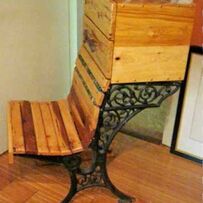 Decatur woodworker Richard Grugel, who has a day job as a NASA engineer,
creates furniture from wood and found objects. (Richard Grugel)
Decatur woodworker Richard Grugel, who has a day job as a NASA engineer,
creates furniture from wood and found objects. (Richard Grugel)
Alabama Makers
Richard Grugel: Giving History New Life
By Courtney Lowery
You might imagine that a NASA scientist who develops experiments for microgravity research aboard the International Space Station would just want to kick back and relax in his off time. But not Richard Grugel! Grugel spends his spare time practicing woodworking, using found or scrap objects to craft unique pieces of furniture. The Decatur artist even finds time to show his work at local festivals. As he nears retirement, Grugel may just have some extra time in his schedule—meaning that Alabamians may have even more locally made items in which to delight.
About the Author
Courtney Lowery is a senior at the University of Alabama majoring in history with a minor in anthropology. She is from Decatur, Alabama, and plans to attend graduate school in the fall. She hopes to teach history at a university.
Richard Grugel: Giving History New Life
By Courtney Lowery
You might imagine that a NASA scientist who develops experiments for microgravity research aboard the International Space Station would just want to kick back and relax in his off time. But not Richard Grugel! Grugel spends his spare time practicing woodworking, using found or scrap objects to craft unique pieces of furniture. The Decatur artist even finds time to show his work at local festivals. As he nears retirement, Grugel may just have some extra time in his schedule—meaning that Alabamians may have even more locally made items in which to delight.
About the Author
Courtney Lowery is a senior at the University of Alabama majoring in history with a minor in anthropology. She is from Decatur, Alabama, and plans to attend graduate school in the fall. She hopes to teach history at a university.
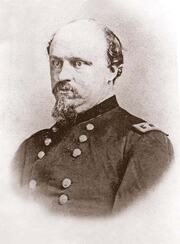
Alabama Governors
Gen. Wager T. Swayne
By Samuel L. Webb
The man who led Alabama after its twentieth governor was never elected. Rather, Gen. Wager T. Swayne was appointed as a military governor during Reconstruction. A New York native and Brigadier General in the Union Army, Swayne advocated for humane treatment of African Americans, punishing whites who enacted violence against them, and outlawing chain gangs. He was also formative in bringing the Republican Party to Alabama. Though removed by Pres. Andrew Johnson less than a year into his appointment, Swayne offered Alabamians a new way forward after the Civil War.
About the Author
Samuel L. Webb holds a JD from the University of Alabama School of Law and a PhD in history from the University of Arkansas. This department is drawn from Alabama Governors: A Political History of the State, second edition, edited by Webb and Margaret E. Armbrester (University of Alabama Press, 2014).
Additional Resources
More info: http://www.encyclopediaofalabama.org/article/h-1465 https://ohiohistorycentral.org/w/Wager_Swayne
Gen. Wager T. Swayne
By Samuel L. Webb
The man who led Alabama after its twentieth governor was never elected. Rather, Gen. Wager T. Swayne was appointed as a military governor during Reconstruction. A New York native and Brigadier General in the Union Army, Swayne advocated for humane treatment of African Americans, punishing whites who enacted violence against them, and outlawing chain gangs. He was also formative in bringing the Republican Party to Alabama. Though removed by Pres. Andrew Johnson less than a year into his appointment, Swayne offered Alabamians a new way forward after the Civil War.
About the Author
Samuel L. Webb holds a JD from the University of Alabama School of Law and a PhD in history from the University of Arkansas. This department is drawn from Alabama Governors: A Political History of the State, second edition, edited by Webb and Margaret E. Armbrester (University of Alabama Press, 2014).
Additional Resources
More info: http://www.encyclopediaofalabama.org/article/h-1465 https://ohiohistorycentral.org/w/Wager_Swayne
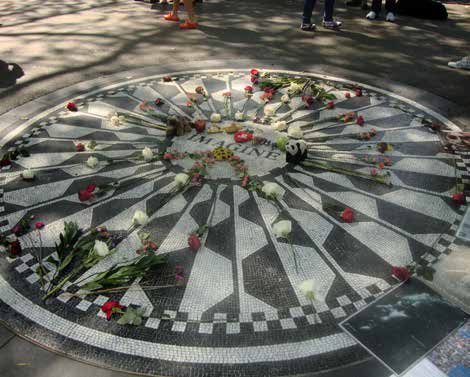
Portraits & Landscapes
Strawberry Fields Forever: The Legacy of Bruce Kelly
Most people likely recognize—or at least have heard of—Strawberry Fields, the area in New York City’s Central Park that memorializes musician John Lennon. But far fewer know the name of the man who created Strawberry Fields—Bruce Kelly. Kelly, an Alabama native, spent much of his youth in Georgia, where he cultivated a love for gardening and a robust set of opinions about where his mother’s plants should take root. Kelly pursued education and a career in New York City, where he pioneered the field of landscape architecture. His work on Strawberry Fields emerged from his connection to Central Park and its extensive restoration, in which he was instrumental.
About the Author
Jenny Enslen Stubbs is a communication studies graduate of the University of Alabama, has enjoyed twenty years in the publishing industry, and currently works as director of Main Street Wetumpka and copy editor of Joy to Life magazine.
Additional Resources
To learn more about Strawberry Fields, see https://www.centralparknyc.org/attractions/strawberry-fields.
Strawberry Fields Forever: The Legacy of Bruce Kelly
Most people likely recognize—or at least have heard of—Strawberry Fields, the area in New York City’s Central Park that memorializes musician John Lennon. But far fewer know the name of the man who created Strawberry Fields—Bruce Kelly. Kelly, an Alabama native, spent much of his youth in Georgia, where he cultivated a love for gardening and a robust set of opinions about where his mother’s plants should take root. Kelly pursued education and a career in New York City, where he pioneered the field of landscape architecture. His work on Strawberry Fields emerged from his connection to Central Park and its extensive restoration, in which he was instrumental.
About the Author
Jenny Enslen Stubbs is a communication studies graduate of the University of Alabama, has enjoyed twenty years in the publishing industry, and currently works as director of Main Street Wetumpka and copy editor of Joy to Life magazine.
Additional Resources
To learn more about Strawberry Fields, see https://www.centralparknyc.org/attractions/strawberry-fields.
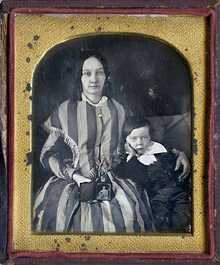
Behind the Image
A Tale of a Traveling Man
By Frances Osborn Robb
Sometimes one form of technology can assist in unearthing details about another. Though daguerreotypes may not seem like technology in the twenty-first century, in their own era they offered remarkable advances and are still the object of careful study by photographic historians. They can also reveal important details about the art and culture of their creation. For that reason, when a British historian had a daguerreotype with Alabama connections, he quickly reached out to historians in the American South for information. From that correspondence came this tale of a traveling daguerreotype maker and his time in Alabama.
About the Author
Frances Osborn Robb is the contributing editor for the “Behind the Image” department of Alabama Heritage. She is the author of Shot in Alabama: A History of Photography, 1839–1941, and a List of Photographers (University of Alabama Press, 2017). She is passionate about historic photographs.
Additional Resources
Daguerreotype info: http://www.daguerreobase.org/en/knowledge-base/what-is-a-daguerreotype
Info on George Smith Cook: https://www.nps.gov/people/george-cook.htm
Shot in Alabama https://www.amazon.com/Shot-Alabama-Photography-1839-1941-Photographers/dp/081731878X
A Tale of a Traveling Man
By Frances Osborn Robb
Sometimes one form of technology can assist in unearthing details about another. Though daguerreotypes may not seem like technology in the twenty-first century, in their own era they offered remarkable advances and are still the object of careful study by photographic historians. They can also reveal important details about the art and culture of their creation. For that reason, when a British historian had a daguerreotype with Alabama connections, he quickly reached out to historians in the American South for information. From that correspondence came this tale of a traveling daguerreotype maker and his time in Alabama.
About the Author
Frances Osborn Robb is the contributing editor for the “Behind the Image” department of Alabama Heritage. She is the author of Shot in Alabama: A History of Photography, 1839–1941, and a List of Photographers (University of Alabama Press, 2017). She is passionate about historic photographs.
Additional Resources
Daguerreotype info: http://www.daguerreobase.org/en/knowledge-base/what-is-a-daguerreotype
Info on George Smith Cook: https://www.nps.gov/people/george-cook.htm
Shot in Alabama https://www.amazon.com/Shot-Alabama-Photography-1839-1941-Photographers/dp/081731878X
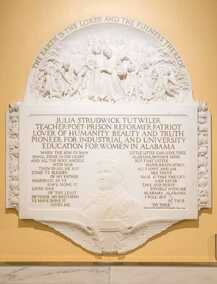
From the Archives
Geneva Mercer’s “Lasting Tribute” to Julia Tutwiler
By Scotty E. Kirkland
The “From the Archives” columns during 2020, the centennial of women’s suffrage, will focus on the important roles of women in Alabama history. In this installment, archivist Scotty Kirkland explores the importance of Julia Tutwiler and the memorial Tutwiler's student, Geneva Mercer, created in her honor. That memorial, a marble sculpture created by Mercer, an accomplished artist, now graces the Alabama Department of Archives and History, a lasting tribute to the woman who shaped life for so many generations of Alabamians.
About the Author
Scotty E. Kirkland is exhibits, publications, and programs coordinator at the Alabama Department of Archives and History.
Additional Resources
Info on Geneva Mercer: http://www.awhf.org/mercer.html
Info on Julia Tutwiler: http://www.awhf.org/tutwiler.html
Geneva Mercer’s “Lasting Tribute” to Julia Tutwiler
By Scotty E. Kirkland
The “From the Archives” columns during 2020, the centennial of women’s suffrage, will focus on the important roles of women in Alabama history. In this installment, archivist Scotty Kirkland explores the importance of Julia Tutwiler and the memorial Tutwiler's student, Geneva Mercer, created in her honor. That memorial, a marble sculpture created by Mercer, an accomplished artist, now graces the Alabama Department of Archives and History, a lasting tribute to the woman who shaped life for so many generations of Alabamians.
About the Author
Scotty E. Kirkland is exhibits, publications, and programs coordinator at the Alabama Department of Archives and History.
Additional Resources
Info on Geneva Mercer: http://www.awhf.org/mercer.html
Info on Julia Tutwiler: http://www.awhf.org/tutwiler.html
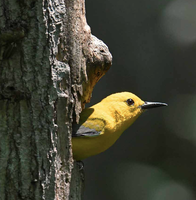
Nature Journal
Prothonotary Warblers
By L. J. Davenport
Avid birders are prone to curious escapades. After all, they are often up before dawn, traipsing through the wilderness in search of that special, elusive species. So when Alabama Heritage’s resident naturalist heard about prothonotary warblers lurking in Alabama’s Ebenezer Swamp, he well, naturally headed off in hot pursuit of the black-and-yellow beauties.
About the Author
Larry Davenport is Paul N. Propst Professor of Natural Sciences at Samford University, Birmingham, and is co-author (with Ken Wills) of Exploring Wild Alabama (University of Alabama Press, 2016).
Additional Resources
To purchase Davenport’s book, see https://www.amazon.com/Exploring-Wild-Alabama-Publicly-Accessible/dp/0817358307.
To learn more about prothonotary warblers, see https://www.allaboutbirds.org/guide/Prothonotary_Warbler/id.
Prothonotary Warblers
By L. J. Davenport
Avid birders are prone to curious escapades. After all, they are often up before dawn, traipsing through the wilderness in search of that special, elusive species. So when Alabama Heritage’s resident naturalist heard about prothonotary warblers lurking in Alabama’s Ebenezer Swamp, he well, naturally headed off in hot pursuit of the black-and-yellow beauties.
About the Author
Larry Davenport is Paul N. Propst Professor of Natural Sciences at Samford University, Birmingham, and is co-author (with Ken Wills) of Exploring Wild Alabama (University of Alabama Press, 2016).
Additional Resources
To purchase Davenport’s book, see https://www.amazon.com/Exploring-Wild-Alabama-Publicly-Accessible/dp/0817358307.
To learn more about prothonotary warblers, see https://www.allaboutbirds.org/guide/Prothonotary_Warbler/id.
Reading the Southern Past
El Golfo de México (Or the Fishy Sea)
By Stephen Goldfarb
This quarter’s installment of “Reading the Southern Past” explores two different texts focused on Alabama’s oceanfront. Taken together, The Gulf of Mexico: A Maritime History (University of South Carolina Press, 2019), by John Sledge, and The Gulf: The Making of an American Sea (Liveright, 2017), by Jack Davis, offer a well-rounded picture of the Gulf of Mexico. While Sledge tracks the area’s political history, Davis explores the natural environment of the area.
About the Author
Stephen Goldfarb holds a PhD in the history of science and technology. He retired from a public library in 2003.
Additional Resources
The Gulf of Mexico by John Sledge https://www.amazon.com/Gulf-Mexico-Maritime-History-Non/dp/1643360140
Gulf: The Making of an American Sea by Jack E. Davis https://www.amazon.com/Gulf-Making-American-Sea/dp/087140866X
El Golfo de México (Or the Fishy Sea)
By Stephen Goldfarb
This quarter’s installment of “Reading the Southern Past” explores two different texts focused on Alabama’s oceanfront. Taken together, The Gulf of Mexico: A Maritime History (University of South Carolina Press, 2019), by John Sledge, and The Gulf: The Making of an American Sea (Liveright, 2017), by Jack Davis, offer a well-rounded picture of the Gulf of Mexico. While Sledge tracks the area’s political history, Davis explores the natural environment of the area.
About the Author
Stephen Goldfarb holds a PhD in the history of science and technology. He retired from a public library in 2003.
Additional Resources
The Gulf of Mexico by John Sledge https://www.amazon.com/Gulf-Mexico-Maritime-History-Non/dp/1643360140
Gulf: The Making of an American Sea by Jack E. Davis https://www.amazon.com/Gulf-Making-American-Sea/dp/087140866X
